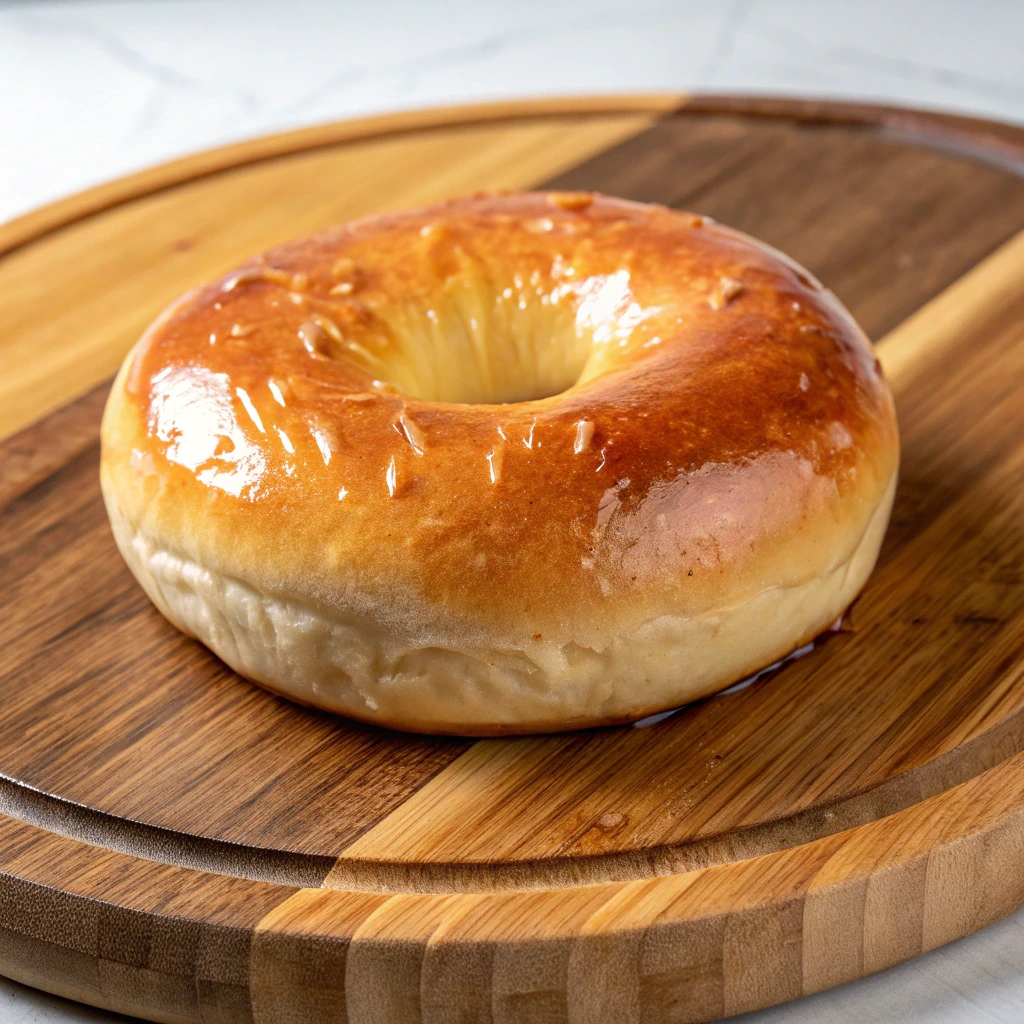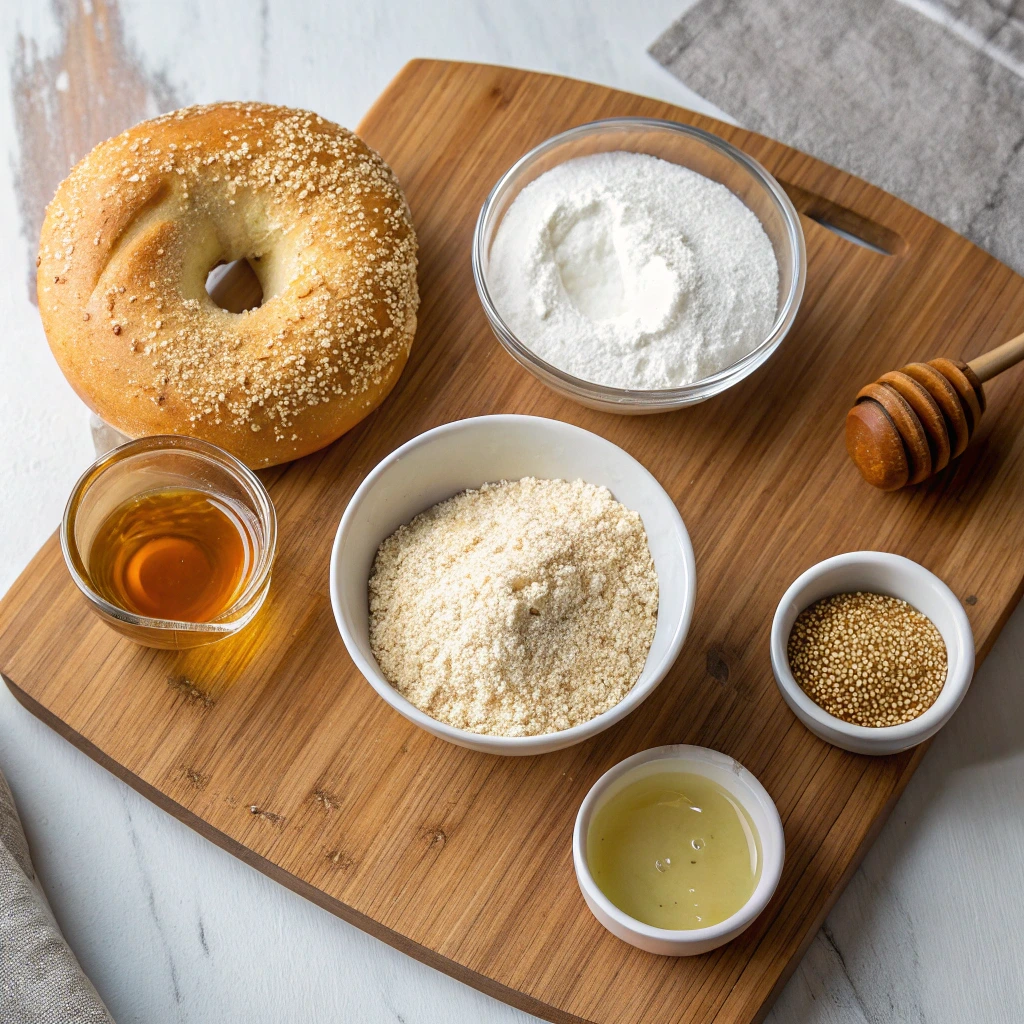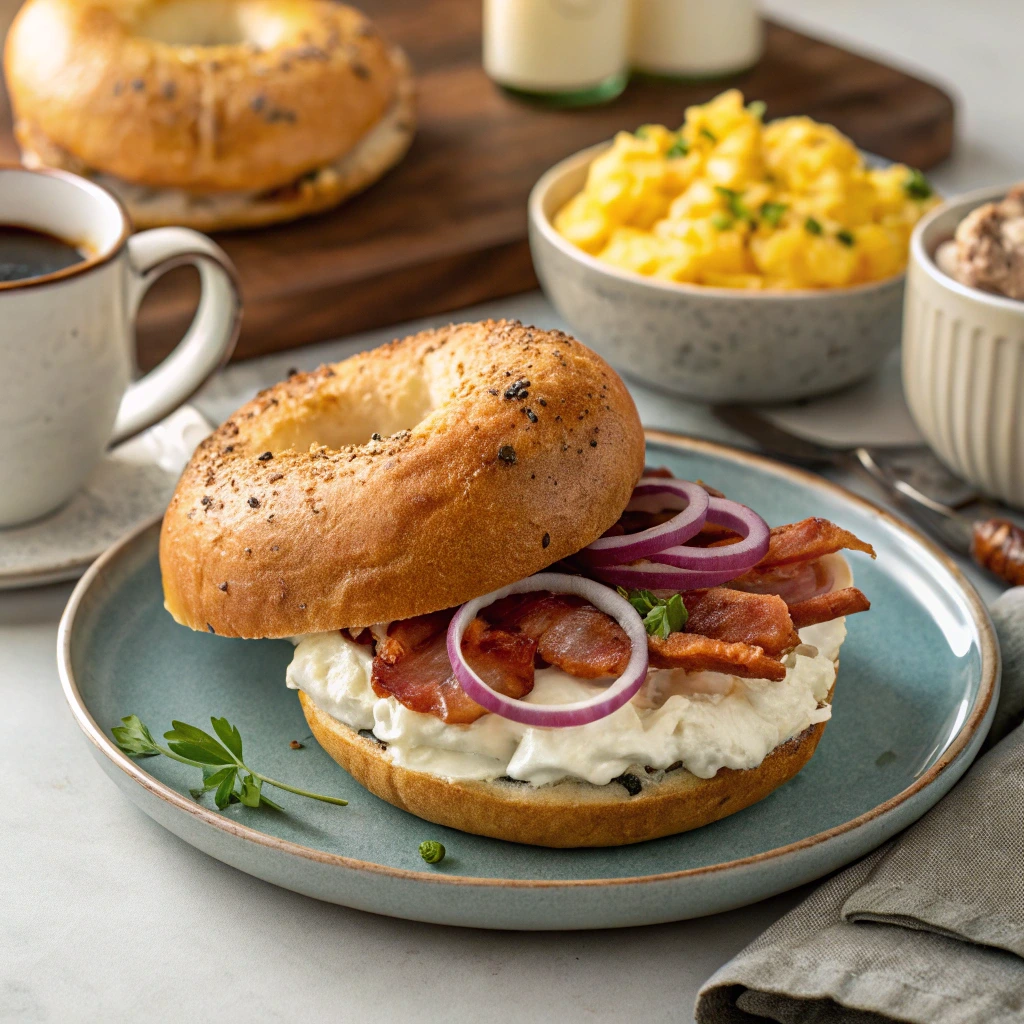
introduction:The Irresistible Allure of a Freshly Baked Bagel
There’s something magical about biting into a warm, chewy bagel fresh out of the oven. Whether you’re savoring its crisp exterior or relishing the soft, doughy center, homemade bagels have a way of turning an ordinary morning into something extraordinary. But here’s the thing—you don’t need to be a professional baker to create this magic in your own kitchen. With just a few simple ingredients and some easy-to-follow steps, you can make bagels that rival your favorite bakery’s offerings.
Imagine waking up to the smell of freshly baked bread wafting through your home, knowing that you made it happen. It’s not just about the taste—it’s about the pride, the satisfaction, and the joy of creating something from scratch. And guess what? Making bagels at home is easier than you think. Let’s dive into this step-by-step guide and unlock the secrets to crafting perfect homemade bagels together.
Why Make Homemade Bagels?
The Joy of Baking from Scratch
- Discuss the satisfaction of making homemade bread and bagels.
- Highlight how baking connects us to traditions and fosters creativity.
- Use LSI keywords like “homemade breakfast ideas” and “artisan bread baking.”
- Share a personal anecdote: “The first time I pulled a batch of golden-brown bagels from the oven, I felt unstoppable—like I’d unlocked a superpower.”
Differences Between Store-Bought and Homemade Bagels
- Compare freshness, flavor, and texture between store-bought and homemade options.
- Mention entities like “New York-style bagels” (dense and chewy) and “Montreal-style bagels” (sweeter and wood-fired).
- Explain how homemade bagels let you control ingredients, avoiding preservatives.
Is It Hard to Make Bagels at Home?
- Address common concerns about difficulty and time commitment.
- Reassure readers with phrases like “easy bagel recipe for beginners.”
- Break down the process into manageable steps: mixing dough, shaping, boiling, and baking.
Ingredients You’ll Need for Homemade Bagels
Essential Ingredients for the Dough
- List primary ingredients with precise measurements:
- Bread flour: For structure and chewiness.
- Yeast: Activates fermentation for fluffy dough.
- Water: Hydrates the dough evenly.
- Sugar: Feeds yeast and adds subtle sweetness.
- Salt: Enhances flavor and strengthens gluten.
- Incorporate trusted brands like “King Arthur Flour” or “Fleischmann’s Yeast” if applicable.
| Ingredient | Quantity | Purpose |
|---|---|---|
| Bread flour | 4 cups | Structure and chewiness |
| Active dry yeast | 2 tsp | Fermentation |
| Warm water | 1¼ cups | Hydration |
| Sugar | 1 tbsp | Flavor and yeast activation |
| Salt | 1 tsp | Flavor enhancement |
Tools and Equipment for Bagel Making
- Include tools needed for each step:
- Mixing bowl: For combining ingredients.
- Stand mixer (optional): Speeds up kneading.
- Rolling pin: Helps shape dough.
- Baking sheet: For final baking.
- Oven: Preheat to 425°F (220°C).
Optional Toppings to Customize Your Bagels
- Suggest toppings for variety:
- Everything seasoning: A classic mix of sesame seeds, poppy seeds, garlic, onion, and salt.
- Sesame seeds: Adds nutty crunch.
- Cinnamon sugar: Perfect for sweet lovers.
- Use LSI keywords like “savory bagel toppings” and “bagel customization.”
Substitutions for Dietary Needs
- Offer alternatives for dietary restrictions:
- Gluten-free bagels: Substitute all-purpose flour with almond or oat flour.
- Low-carb bagels: Use low-carb flours like coconut or flaxseed meal.
- Include LSI terms like “gluten-free bagels” and “low-carb bagel options.”

Step-by-Step Guide to Making Bagels
1 – Preparing the Dough
- Walk readers through the dough-making process:
- Combine warm water, sugar, and yeast; let sit until foamy.
- Add flour and salt gradually, mixing until a smooth dough forms.
- Knead for 8–10 minutes until elastic.
- Cover and let rise for 1–2 hours until doubled.
2 – Shaping the Bagels
- Provide tips for shaping perfectly round bagels:
- Divide dough into equal portions (about 3 oz each).
- Roll into balls, poke a hole in the center, and stretch gently.
- Rest shaped bagels for 15–20 minutes before boiling.
3 – Boiling the Bagels
- Describe the boiling process:
- Bring water to a boil and add baking soda (1 tbsp per quart of water).
- Boil bagels for 30 seconds per side to set the crust.
- Remove and place on a baking sheet lined with parchment paper.
4 – Baking to Perfection
- Share baking tips for golden results:
- Preheat oven to 425°F (220°C).
- Brush tops with egg wash for shine.
- Sprinkle desired toppings before baking for 20–25 minutes.
Tips for Perfect Homemade Bagels
How to Achieve Chewy Bagels
- Emphasize proper kneading and boiling techniques.
- Use LSI terms like “chewy bagels” and “yeast dough.”
Avoiding Common Mistakes
- Address pitfalls like over-proofing or skipping the boiling step.
- Use LSI keywords like “bagel-making tips” and “dough texture.”
Storing and Freezing Bagels
- Provide storage instructions:
- Store cooled bagels in an airtight container for up to 3 days.
- Freeze bagels individually wrapped in plastic for longer storage.
Serving Suggestions and Pairings
Classic Bagel Spreads and Fillings
- Recommend spreads like cream cheese, butter, or jam.
- Use LSI terms like “cream cheese spread” and “breakfast foods.”
Creative Ways to Enjoy Your Bagels
- Share innovative ideas:
- Bagel sandwiches with smoked salmon and capers.
- Avocado toast with poached eggs.
- Crispy bagel chips seasoned with herbs.
Pairing Bagels with Beverages
- Suggest coffee, tea, or smoothies as perfect pairings.
- Use LSI terms like “breakfast pairings” and “homemade brunch ideas.”
Hosting a Bagel Brunch Party
- Offer tips for hosting:
- Set up a DIY topping bar with everything seasoning, seeds, and spreads.
- Serve alongside fresh fruit and mimosas for a festive touch.

FAQ Section
- What makes a bagel different from regular bread?
- Bagels are boiled before baking, giving them their signature chewy texture and crispy crust.
- Can I make bagels without a stand mixer?
- Yes! You can knead the dough by hand—it just takes a bit more effort.
- How do I know when my bagel dough has risen enough?
- Look for the dough to double in size, usually within 1–2 hours.
- Are homemade bagels healthier than store-bought ones?
- Yes, since you control the ingredients, avoiding preservatives and excess sodium.
- Can I freeze homemade bagels?
- Absolutely! Wrap them tightly in plastic wrap and freeze for up to 3 months.

Conclusion
Making homemade bagels is not only achievable but also incredibly rewarding. From the moment you mix the dough to the instant you pull those golden beauties from the oven, every step is filled with joy and anticipation. Plus, there’s nothing quite like serving friends and family bagels you’ve made yourself—it’s a gesture that speaks volumes about care and craftsmanship.
So why wait? Grab your apron, gather your ingredients, and embark on this delicious adventure today. Once you’ve mastered the art of homemade bagels, share your creations with us! Tag us on social media or leave a comment below—we’d love to hear about your experience.
Happy baking!
